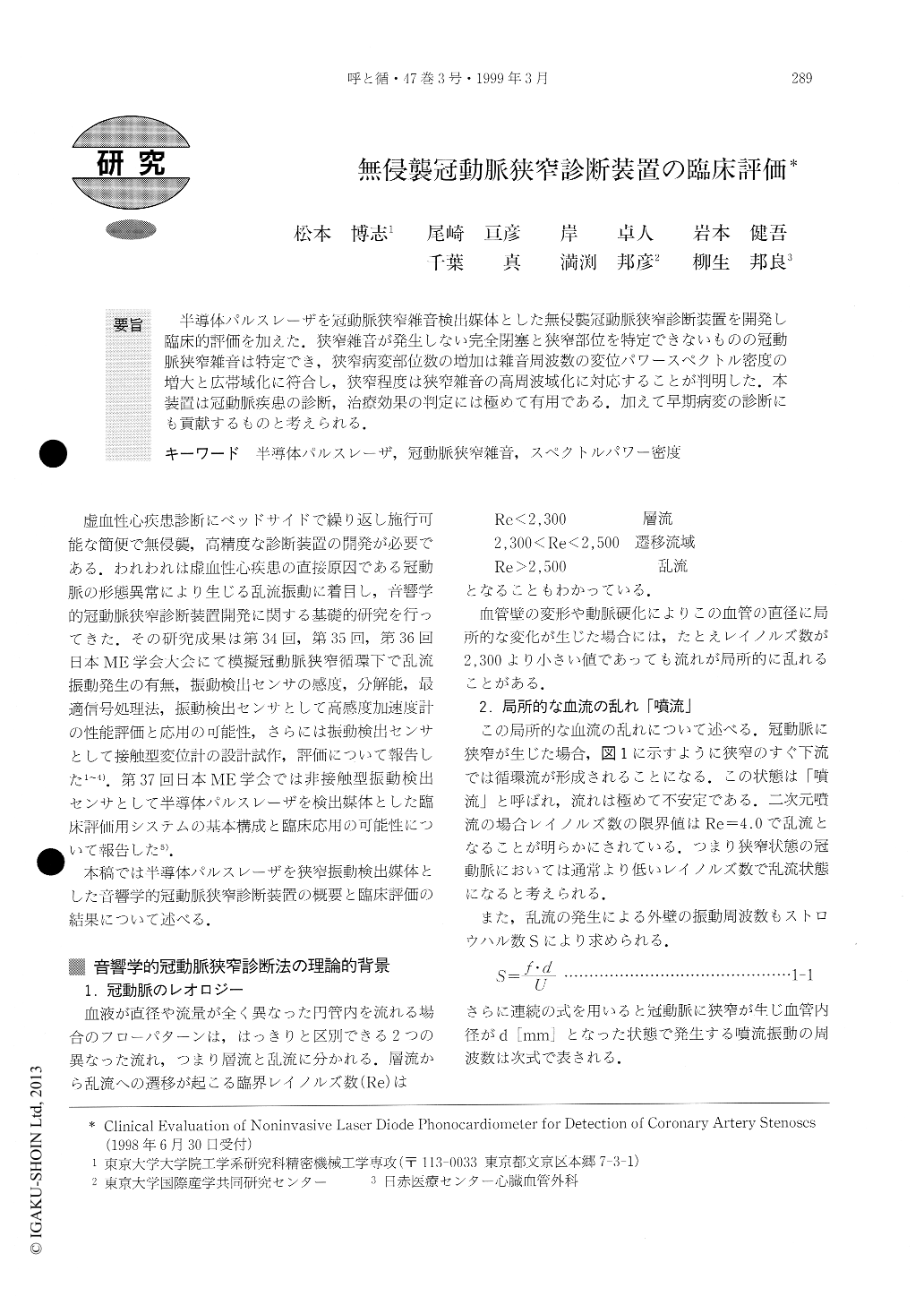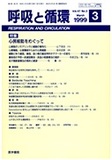Japanese
English
- 有料閲覧
- Abstract 文献概要
- 1ページ目 Look Inside
半導体パルスレーザを冠動脈狭窄雑音検出媒体とした無侵襲冠動脈狭窄診断装置を開発し臨床的評価を加えた.狭窄雑音が発生しない完全閉塞と狭窄部位を特定できないものの冠動脈狭窄雑音は特定でき,狭窄病変部位数の増加は雑音周波数の変位パワースペクトル密度の増大と広帯域化に符合し,狭窄程度は狭窄雑音の高周波域化に対応することが判明した.本装置は冠動脈疾患の診断,治療効果の判定には極めて有用である.加えて早期病変の診断にも貢献するものと考えられる.
Background : It has been reported that coronary stenoses produce sounds due to the turbulent blood flow in the partially occluded coronary arteries. These sounds were detected and analyzed using an appropriate signal processing approach. We developed a new system for noninvasive acoustical detection, which was made up of the newly-developed non contact laser diodephonocardiometer coupled with signal processing of maximum entropy method (MEM).
Methods : We evaluated our detecting system for subjects before and after bypass surgery as well as subjects in whom no bypass surgery had been perfor-med. Patients were selected from those undergoing CAG and/or surgery at the Japanese Red Cross Medical Center. Diastolic heart sounds were recorded for about 10 beats (10 sec) at the bedside and then analyzed by a personal computer. Full examination time was 10 min-utes per a patient.
Results : Clinical evaluation proved that the system detected the stenoses of coronary arteries. Results showed that diastolic heart sounds of patients with three or inure stenoses contained high spectral powers between 300 Hz and 1,000 Hz which were not observed in healthy subjects. A striking difference was observed in spectral characteristics before and after surgery. The number of the high spectral power columm was an indicator of the stenotic site. The high spectral power levels disappeared markedly by recovery of coronary blood flow following surgery. The findings were consis-tent with the coronary angiographic changes following bypass surgery.
Conclusion : the noninvasive laser diode phonocar-diometer system for detection of coronary stenoses was found to be an effective method not only for separating normals from abnormals but also for assessing the number of stenoses associated with coronary artery disease. In addition, it was able to be carried out speed-ily and at a low cost, and was able to be used instead of coronary angiography.

Copyright © 1999, Igaku-Shoin Ltd. All rights reserved.


